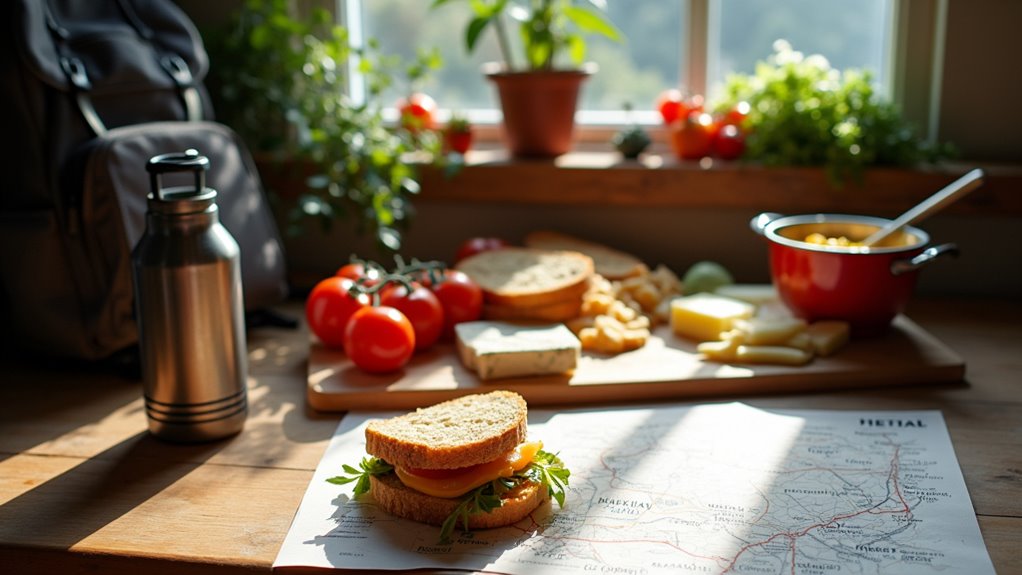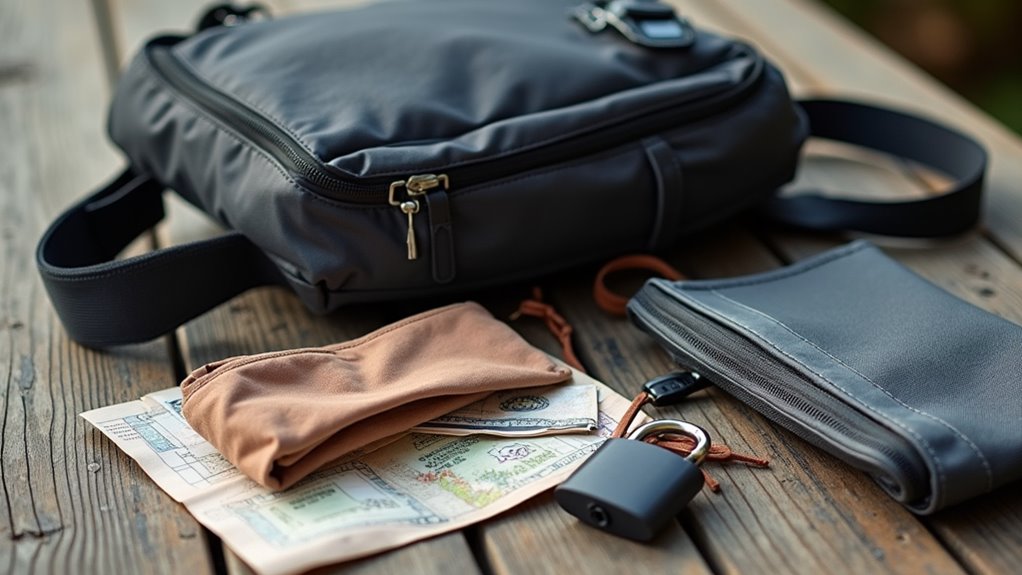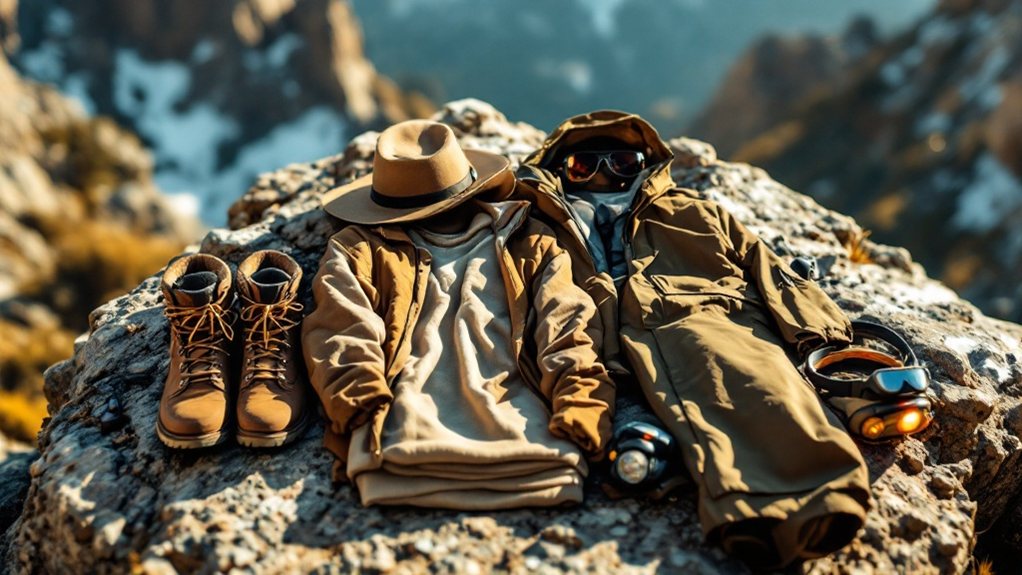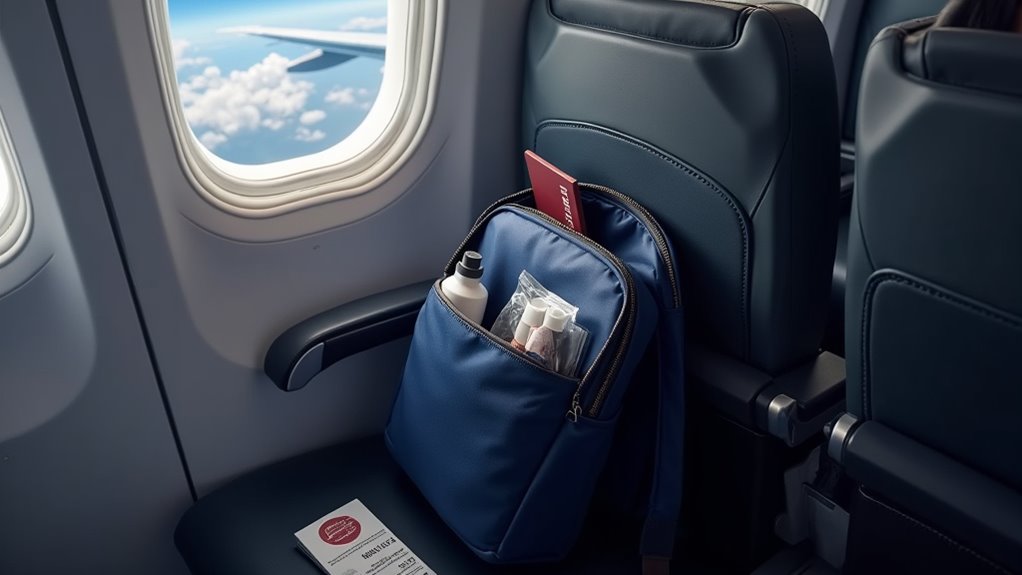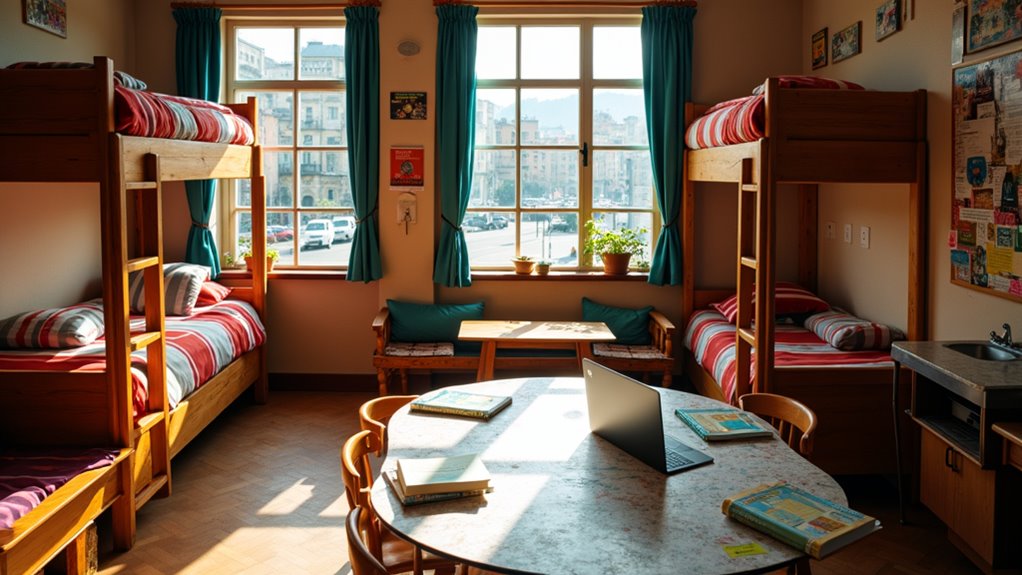To eat cheap on vacation as a backpacker, choose accommodations with kitchens or shared cooking areas so you can prepare your own meals and store leftovers, which greatly reduces costs. Shop at local markets for fresh, affordable produce and pack snacks like nuts or granola bars to avoid impulse buys. Limit restaurant visits to special occasions and try local street food for authentic, inexpensive meals. Setting a clear food budget and preparing in advance will maximize your savings; further strategies can fine-tune your approach.
When planning a vacation, managing your food budget is essential to keeping overall travel costs under control. As a backpacker, you’ll find that eating cheap doesn’t mean sacrificing quality or cultural experiences. One effective way to cut food expenses is by choosing accommodations with a kitchen or access to shared cooking spaces. Hostels and apartments often provide these facilities, letting you prepare your own meals, store leftovers in a mini fridge, and reheat food using a microwave. This approach greatly reduces the need to dine out for every meal, allowing you to reserve restaurant visits for special occasions or unique local experiences.
Preparing your own meals in hostels or apartments helps you save money and experience local flavors without missing out on cultural highlights.
Grocery shopping at local markets is another practical strategy. Markets offer fresh produce, regional specialties, and staples at prices far below those of restaurants. Researching local eatery options before you travel can also help you find budget-friendly dining alternatives and avoid pricey tourist traps. Planning grocery stops along your travel route guarantees you always have ingredients on hand for meal preparation. Packing snacks such as granola bars, nuts, and dried fruits also helps you avoid impulse purchases at tourist hotspots, where food is often overpriced. Carrying a reusable water bottle keeps you hydrated and eliminates the need to buy bottled water repeatedly. Packing food before departure, such as non-perishable snacks or sandwiches, can also help you save money and ensure you always have something to eat on the go.
Exploring street food is both budget-friendly and a gateway to authentic local cuisine. Street vendors typically serve traditional dishes at lower prices, providing a cultural experience as well as a meal. Fast food options, like sandwiches or salads, can also be affordable alternatives when you need something quick and convenient. However, balancing cost and nutrition is important. Opt for fresh foods from markets instead of heavily processed items, and aim for nutritious snacks that sustain your energy throughout the day. Taking advantage of lunch specials can significantly reduce your dining expenses, as many restaurants offer the same dishes at lower prices during midday hours.
Setting a clear food budget before your trip helps you track expenses and avoid overspending. Limiting restaurant visits, prioritizing self-cooked meals, and buying ingredients in bulk can have a considerable impact on your daily costs.
Negotiating accommodation rates to include kitchen access is sometimes possible, especially in hostels or apartment rentals. By thoughtfully combining these approaches, you’ll maintain both your health and your budget, making your travels more sustainable and enjoyable.
